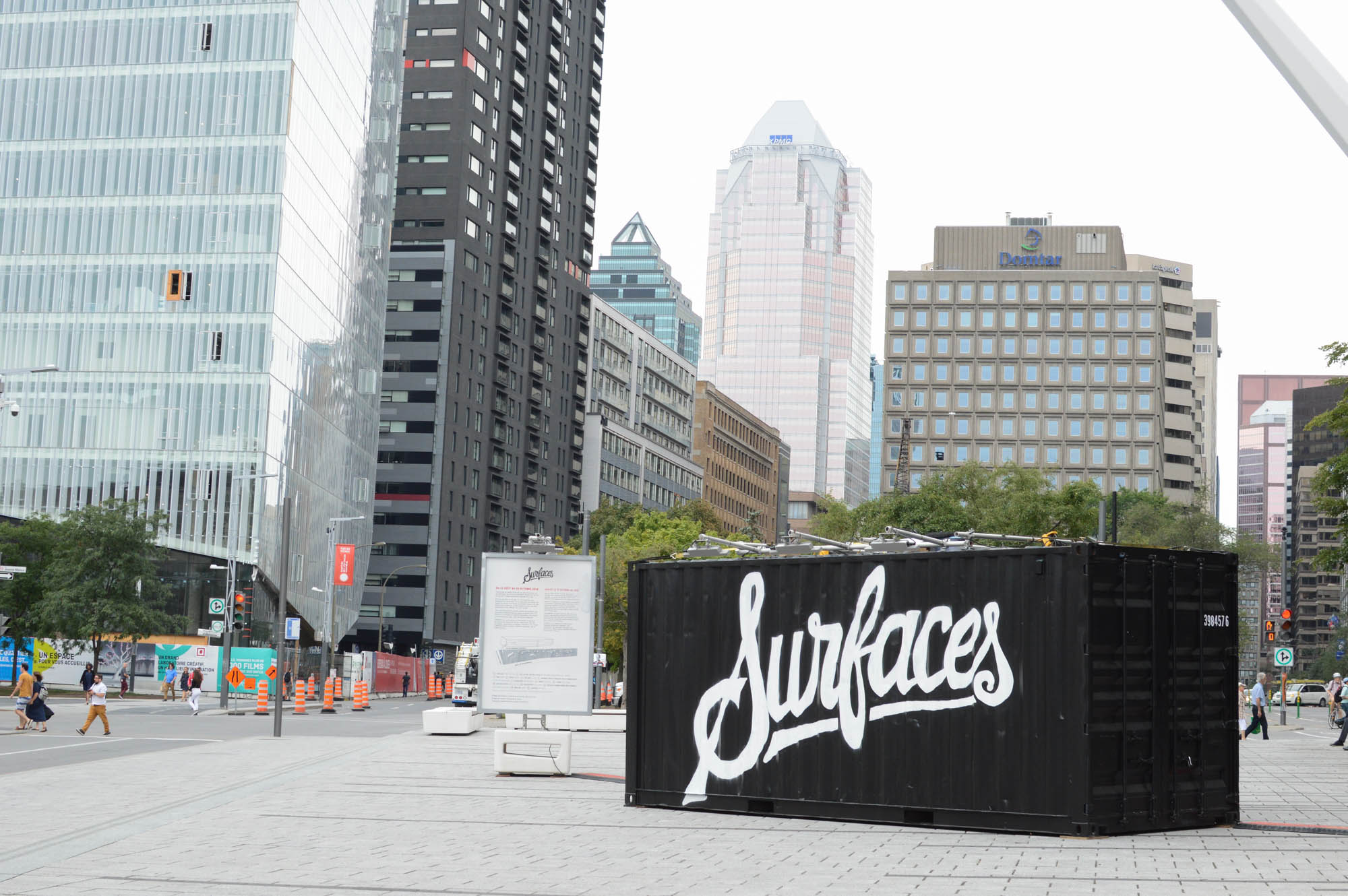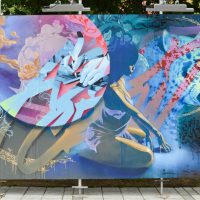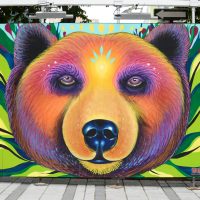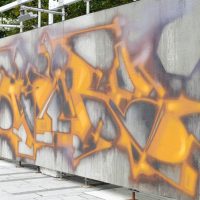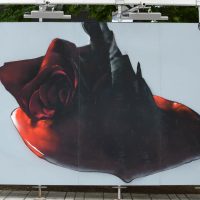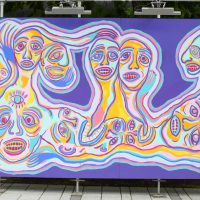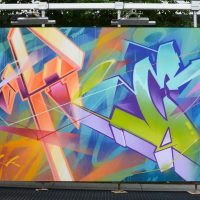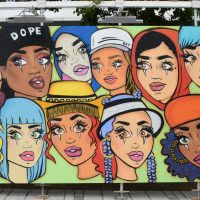Redefining Montreal’s urban landscape in Surfaces
Montreal is alive with street art, from huge murals and intricate details, to vibrant colours and distinct graffiti. In artworks across the city, there is a re-understanding of the landscape and surrounding environment. Traditional ways of viewing and accessing art are challenged.
Surfaces, on display from Aug. 23 to Oct. 28 at the Promenade des Artistes in Quartier des Spectacles, is a multidisciplinary urban exhibition showcasing works
from some of Montreal’s most successful street artists. Displaying 14 works by 16 artists and collectives—including Miss Me, Omen, Zek One and Shalak Attack—the exhibition features distinctive and varied works.
The exhibition’s pieces are primarily displayed on large, individual panels, paired with signs that provide information about the respective artists and their practices. Two sculptural works are also displayed; one made of individually detailed concrete cubes and the other is a car, decorated with writing. There is diversity and variety in the distinct style of each artist, which showcases the versatility of the street art format and provides something for every viewer.
Miss Me, a prominent figure in Montreal’s urban art scene, is known for her explicitly political and feminist art. At Surfaces, the artist’s panel consists of five mostly nude female figures, all with their faces covered by a ski mask with cartoon-style mouse ears. The bodies are adorned with drawings and statements, including “IT’S NOT ME, IT’S YOU” and “Stop blaming women for the misbehaviours of men.”
Cedar Eve is an Anishinaabe artist and a Concordia fine arts alumna, having graduated in 2012. Her piece in Surfaces depicts brightly coloured, surrealist figures in spaces of transformation and metamorphosis. The work is connected to her First Nations identity and is inspired by stories shared with her as a child.
In the case of both these artists, the political and the personal are explored and shared through their work. Taking up space in a city and displaying these powerful messages is also arguably a political move.
Accessibility is a regularly discussed and dissected issue within the art world. Who can access art? How does privilege and class influence accessibility? Institutions, such as art galleries and museums, often appear as exclusive spaces for select communities, and are not always physically accessible for all. Further boundaries can be found in the realms of academia. Art is often not accessible in this way either, as many viewers often feel discouraged by the potential condescension within the artistic community.
Street art explores and challenges these questions and the normative institutions of viewing art. Painting on structures and areas within the city also fights the concept of ownership and select viewing, heightening accessibility for all. This aspect was clearly considered by the curators of Surfaces, who aptly display the 16 works in a public, outdoor space rather than inside a gallery.
Surfaces will be on display at the Promenade des Artistes in the Quartier des Spectacles until Oct. 28. The exhibition is outdoors and open to the public.
